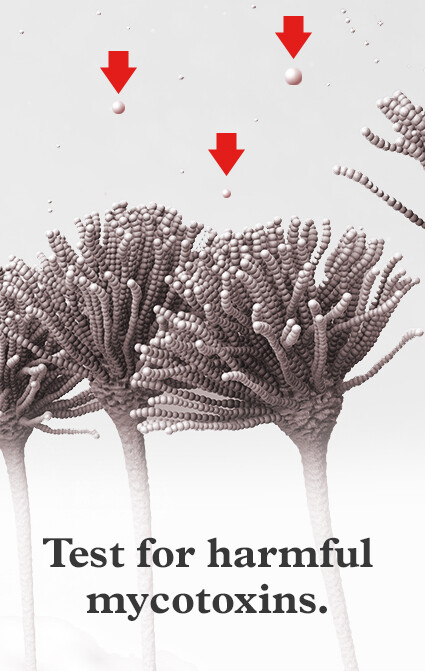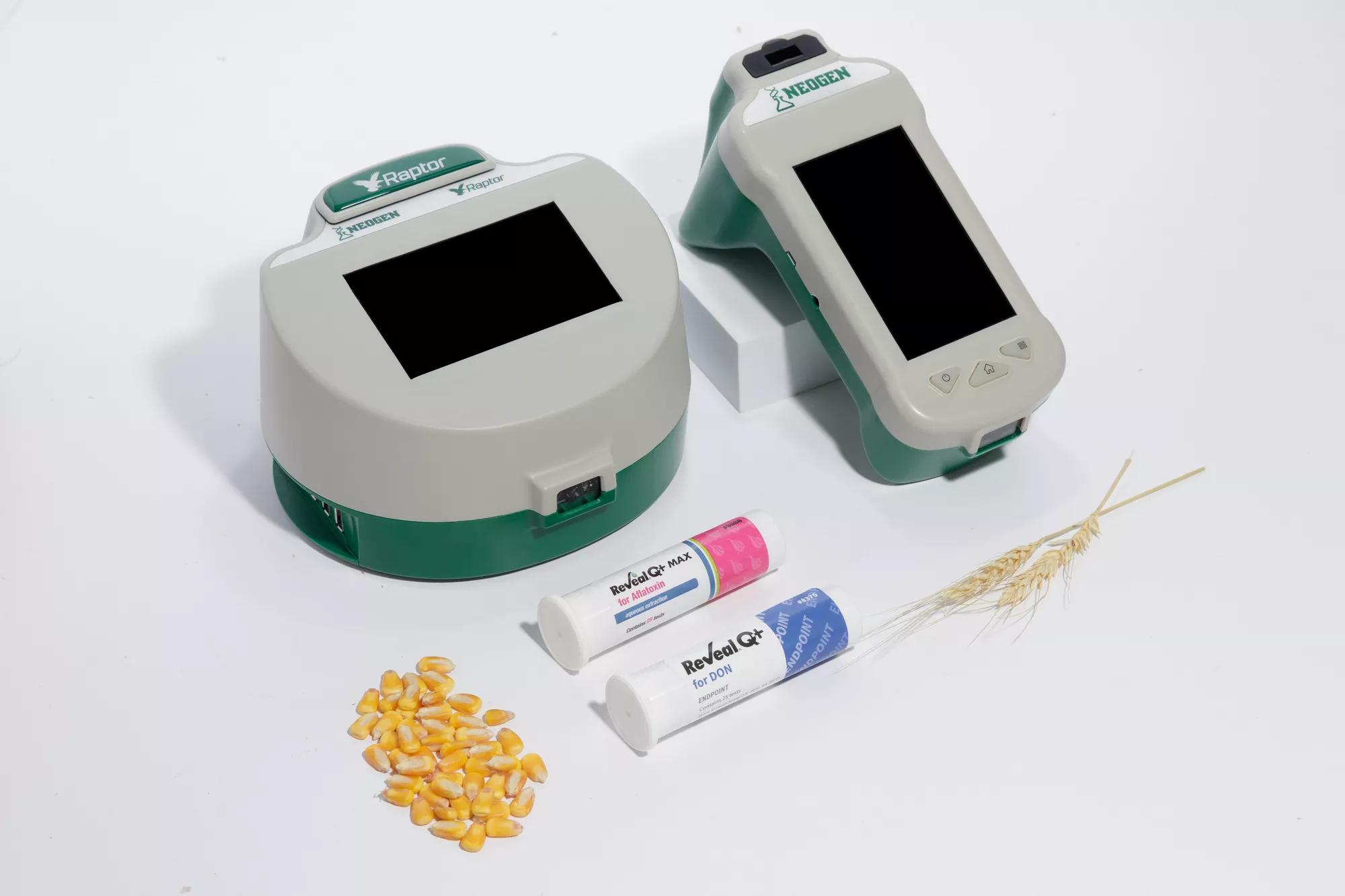Mycotoxin testing Services: A Trick Part in Threat Monitoring Methods
Mycotoxin testing Services: A Trick Part in Threat Monitoring Methods
Blog Article
Just How Mycotoxin Screening Aids Prevent Contamination and Protect Food Materials

Mycotoxin screening is an important technique in the food industry, serving as a frontline protection versus contamination by damaging contaminants produced by molds. With the application of innovative strategies like High-Performance Liquid Chromatography (HPLC) and Liquid Chromatography-Mass Spectrometry (LC-MS), food producers can properly detect and quantify mycotoxin degrees in agricultural products.
Comprehending Mycotoxins
Comprehending mycotoxins begins with acknowledging that they are hazardous additional metabolites created by specific molds, which can contaminate farming products. These metabolites are not necessary for the development or reproduction of the fungis yet can have severe ramifications for human and animal health and wellness. Mycotoxins are generally found in staple plants such as corn, wheat, barley, and nuts, where they can multiply under specific conditions of wetness and temperature level.
There are several kinds of mycotoxins, each created by various fungal types. Fusarium species generate trichothecenes and fumonisins, both of which are associated with numerous severe and persistent health and wellness issues.

Risks of Mycotoxin Contamination
The risks of mycotoxin contamination are diverse, positioning substantial risks to both food safety and security and public health and wellness. Mycotoxins, hazardous compounds created by particular types of fungis, can contaminate a large range of agricultural items including cereals, nuts, seasonings, dried fruits, and coffee.
Financial influences are one more significant concern. Polluted plants can result in considerable economic losses for farmers and food producers because of lowered yields and the requirement for pricey decontamination procedures. Global profession can be significantly impeded as countries impose stringent mycotoxin regulations to secure their populaces, leading to denied shipments and strained trade relations.
Environmental elements such as climate modification worsen the danger of mycotoxin contamination. Variants in temperature level and moisture can develop desirable problems for fungal development, raising the likelihood of contamination occasions. Hence, understanding and mitigating these risks are essential for making sure the security and stability of worldwide food materials.
Methods of Mycotoxin Evaluating
Accurately identifying mycotoxin contamination in farming items is necessary for guarding public health and wellness and preserving food safety standards. Various approaches are utilized to discover and measure mycotoxins, each offering particular advantages and limitations.
High-Performance Fluid Chromatography (HPLC) is an extensively utilized technique due to its high level of sensitivity and accuracy. It includes separating mycotoxins from other materials in an example, allowing accurate metrology. In A Similar Way, Fluid Chromatography-Mass Spectrometry (LC-MS) integrates liquid chromatography with mass spectrometry to provide thorough molecular info, making it especially helpful for identifying multiple mycotoxins simultaneously - Mycotoxin testing Services.

Gas Chromatography-Mass Spectrometry (GC-MS) and Thin-Layer Chromatography (TENDER LOVING CARE) are likewise utilized, each with special applications. GC-MS is efficient for unstable mycotoxins, while TLC offers a simpler, cost-effective choice for initial testing.
Advantages of Normal Testing
Regular testing for mycotoxins in farming items uses many advantages, substantially adding to public health and food safety. By recognizing contamination early, routine testing aids stop the distribution of poisonous foods, consequently minimizing the risk of mycotoxin-related illnesses amongst consumers. This proactive strategy not only safeguards human health however also Homepage boosts the general quality of food products.
Consistent screening likewise sustains regulative conformity. Different nations and regions have actually established rigorous limitations for mycotoxin degrees in food and feed. Complying with these restrictions through normal testing makes sure that providers and manufacturers fulfill lawful requirements, thus staying clear of penalties and trade barriers. Maintaining compliance fosters consumer trust and brand name reputation, which are crucial for market success.
Additionally, regular mycotoxin testing can cause substantial financial advantages. Early discovery of contamination allows for timely intervention, decreasing prospective losses from extensive contamination. Carrying out routine screening procedures can additionally decrease recall prices and relevant responsibilities, which can be financially devastating.
Furthermore, regular testing provides valuable data that can educate better agricultural methods and storage conditions. By understanding patterns of contamination, producers can adopt safety nets, thereby adding and lowering future threats to the sustainability of the food supply chain.
Carrying Out Checking Procedures
Executing effective mycotoxin screening methods is vital for making certain the safety and security and top quality of farming view it items. Establishing a robust screening structure entails numerous vital actions, starting with the identification of possible contamination link points within the production and supply chain. This includes pre-harvest, post-harvest, storage space, and circulation stages. Each phase must be looked at to identify where mycotoxin contamination is probably to happen.
Once critical control factors are identified, selecting ideal testing methods is necessary. Common strategies include enzyme-linked immunosorbent assay (ELISA), high-performance fluid chromatography (HPLC), and mass spectrometry (MS) Each technique has its weak points and staminas; thus, picking the appropriate one depends on the particular mycotoxin being examined, the required level of sensitivity, and offered sources.

Lastly, incorporating the testing methods into a comprehensive food security management system is a good idea. This enhances traceability and makes it possible for quick rehabilitative activities when contamination is discovered, consequently securing the stability of the food supply chain.
Final Thought
Mycotoxin screening is important in avoiding contamination and safeguarding food products by enabling very early discovery of hazardous contaminants produced by molds in farming products. Advanced techniques such as HPLC and LC-MS make certain compliance with security laws and protect consumers from wellness threats. Regular testing improves brand name reputation, monetary security, and count on food safety by lessening contamination-related losses and keeping high criteria in food production. Executing strenuous screening methods is thus crucial for the sector's total well-being.
Mycotoxin screening is an essential practice in the food industry, serving as a frontline protection versus contamination by dangerous contaminants created by molds. An incorporated technique including agricultural practices, storage space monitoring, and normal testing can reduce the risks linked with mycotoxin contamination, making certain food security and public health and wellness.
The risks of mycotoxin contamination are complex, posturing considerable risks to both food safety and public wellness.Routine testing for mycotoxins in farming items offers countless advantages, substantially contributing to public wellness and food security.Mycotoxin testing is crucial in stopping contamination and protecting food products by allowing early discovery of hazardous toxins created by molds in farming products.
Report this page